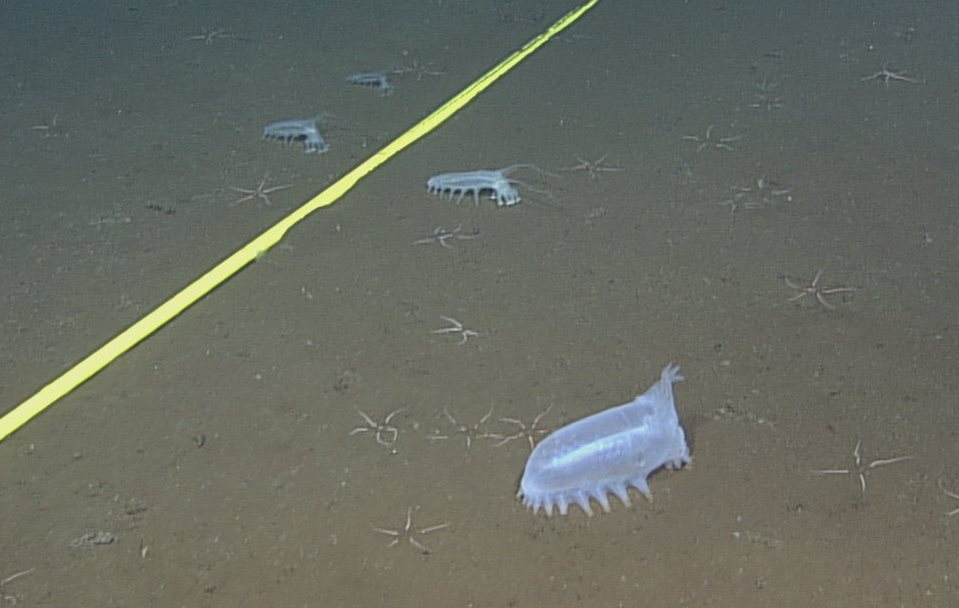Sea Pig (Scotoplanes globosa)

Sea pigs are usually 4-6 inches long. They are distributed throughout the abyssal plain of the deep ocean, residing in all of the major ocean basins. They are actually a species of sea cucumber, one of the few that uses legged locomotion. Their leg-like appendages are known as tube feet, the same projections that sea stars have. They use a water vascular system to inflate and deflate these appendages and move around the ocean floor.
These organisms are deposit feeders, searching through the sediment for bits of organic material that have settled from above. Often times, multitudes of specimens can be found pointing in the same direction, oriented upstream to detect possible food sources. Although they look similar to the Peniagone genus, they are actually a different taxonomic group, and can most easily be distinguished by the two pairs of antennae-like appendages that can be found on both sides of its body, as opposed to the single pair found in Peniagone.
References:
Hansen, B. (1972). "Photographic evidence of a unique type of walking in deep-sea holothurians". Deep Sea Research and Oceanographic Abstracts 19 (6): 461–462.
http://eol.org/pages/599675/overview








